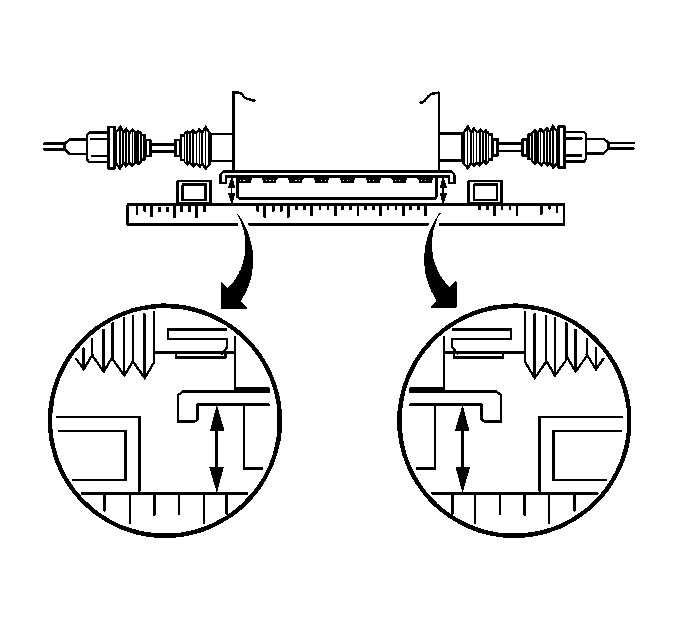
Step | Action | Value(s) | Yes | No | ||||
|---|---|---|---|---|---|---|---|---|
DEFINITION: On a dry, smooth, flat road, the vehicle has a left or right steering force that is eliminated when the transmission is shifted into Neutral. The level of the steering force is usually (but not always) dependent on the amount of torque which is applied by the engine. Torque steer at constant highway speed is frequently mistaken for lead/pull. | ||||||||
1 | Road test the vehicle in order to verify the customer condition. Does the vehicle exhibit an abnormal amount of torque steer? | -- | Go to Step 2 | System OK | ||||
2 |
Does the vehicle still exhibit an abnormal amount of torque steer? | -- | Go to Step 3 | System OK | ||||
3 |
Has the inspection/repair been performed? | -- | Go to Step 4 | -- | ||||
4 |
Does the vehicle direction change when the steering wheel is momentarily released? | -- | Go to Radial Tire Lead/Pull Correction in Tires and Wheels | Go to Step 5 | ||||
5 |
Does the vehicle exhibit torque steer when the accelerator is pressed? | -- | Go to Step 6 | System OK | ||||
6 |
Does the vehicle still exhibit torque steer? | -- | Go to Step 7 | System OK | ||||
7 | Measure the transaxle height at each side from the frame as shown at the beginning of this procedure. Is difference between the left and right side measurements greater than the specified value? | 6 mm (0.24 in) | Go to Step 8 | Go to Step 10 | ||||
8 | Inspect for worn or damaged powertrain mounts. Replace as necessary.
Has the inspection/repair been performed? | -- | Go to Step 9 | -- | ||||
9 |
Does the vehicle still exhibit torque steer? | -- | Go to Step 10 | System OK | ||||
10 | Inspect and adjust the wheel alignment as necessary. Refer to Wheel Alignment Measurement in Wheel Alignment. Has the inspection/adjustment been performed? | -- | Go to Step 1 | System OK | ||||
